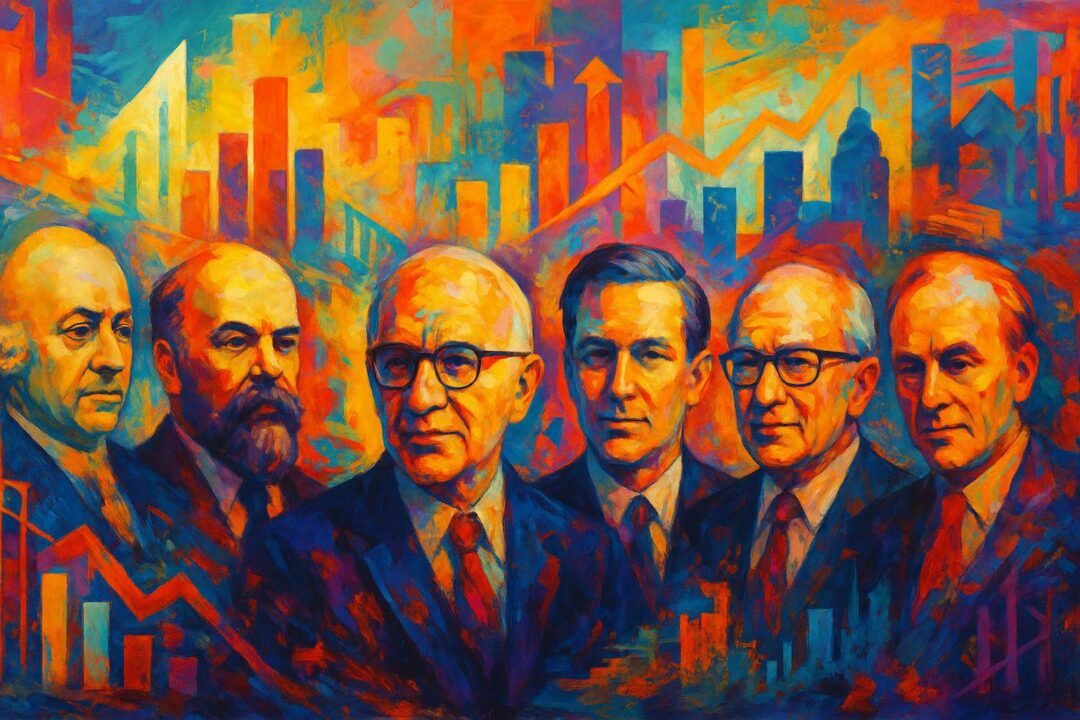And why this disconnect is unusual, short-lived, and often driven by global capital flows
It seems counterintuitive at first: a country is struggling — inflation is high, its currency is falling, and growth is weak — yet its stock market is soaring. How can that possibly make sense?
While this isn’t a common occurrence, and usually doesn’t apply to broad, balanced indices like the S&P 500, it can happen. In fact, it’s more likely in countries with narrower, sector-heavy stock markets, where a few dominant companies either benefit from the crisis or attract international capital fleeing other risks.
But here’s the key: these rallies are usually temporary. Eventually, real economic fundamentals catch up with markets — they always do.
1. Not All Indices Reflect the Broader Economy
Major indices like the S&P 500 track hundreds of companies across multiple sectors and tend to move with broader economic trends. But many other countries use narrower indices — like the FTSE 100, DAX 40, or BIST 30 — that are much more concentrated.
These indices might be dominated by:
- Exporters
- Commodity firms
- Banks
- State-linked enterprises
- Multinational giants
If those sectors benefit from current conditions (e.g. rising commodity prices, weak currency), the index can climb — even while the rest of the economy contracts.
2. Some Companies Benefit From Crisis Conditions
Certain companies are built for chaos:
- Defense firms do well during geopolitical instability.
- Energy and commodity producers thrive on inflation and shortages.
- Exporters benefit from currency devaluation.
- Essential goods and services (healthcare, utilities, food) stay in demand.
If these types of companies dominate a country’s index, it may perform well precisely because the conditions are bad.
3. When the Big Economy Wobbles, Capital Looks for New Homes
Here’s a key dynamic that adds to the paradox:
When investors have been heavily concentrated in a large, stable economy — like the U.S. — and signs of slowdown, overvaluation, or policy tightening emerge, they begin to rotate capital out. But there are very few markets large enough to absorb that kind of money.
So what happens?
- Even small or struggling countries can see their markets rally as capital floods in.
- That inflow may inflate local stock prices, even if the underlying economy hasn’t improved.
- Often, these countries are chosen not because they’re doing well — but because they’re not the U.S. or not Europe or not China.
In those moments, money chases relative opportunity, not absolute safety.
4. Currency Weakness Drives Up Stock Prices (Nominally)
In countries with high inflation or weakening currencies:
- Stock prices may rise rapidly in local terms — but only because it now takes more currency units to buy the same shares.
- Exporters and commodity firms may see genuine earnings boosts from favorable exchange rates.
This kind of rally is more about preserving purchasing power than creating new wealth. In real or foreign-currency terms, the gains may vanish.
5. TINA: There Is No Alternative
Sometimes investors push into equities because every other option looks worse:
- Bonds may yield less than inflation (or go negative).
- Cash may be devaluing.
- Real estate may be illiquid.
- Capital controls may prevent foreign diversification.
So money piles into the only available, liquid assets — often the largest listed companies on the local stock market.
6. Policy Support Lifts the Top End
In a crisis, large firms often receive the most support:
- Bailouts, government contracts, or monetary stimulus may stabilize their earnings.
- Investors anticipate this support and bid up prices.
Smaller businesses, informal workers, and local services may be suffering deeply — but the index rises because the top 30–100 companies are surviving or even thriving.
7. These Disconnects Are Usually Temporary
Markets and economies can diverge, but not forever. These kinds of rallies tend to fizzle out because:
- Real earnings growth can’t be sustained in a weak economy.
- Currency devaluation continues to erode real returns.
- Investor sentiment shifts when fundamentals don’t improve.
- Global capital is fickle — it moves quickly, and often exits just as fast as it entered.
Eventually, stock prices reflect actual performance — and unsustainable surges correct sharply.
Final Thoughts
When you see a country’s stock market rallying during an economic downturn, it’s worth asking:
- Who are the dominant companies in this index?
- Do they benefit from the current crisis?
- Is foreign capital inflating prices temporarily?
- Is this a real recovery — or just a rotation away from a weakening global giant?
These rallies aren’t irrational — but they’re not signs of economic health, either. They’re signals of concentrated corporate resilience, short-term capital flows, and sometimes, inflation masked as success.
In time, real fundamentals reassert themselves. Stock markets can get ahead of reality — but they rarely outrun it forever.
Discover more from Brin Wilson...
Subscribe to get the latest posts sent to your email.



